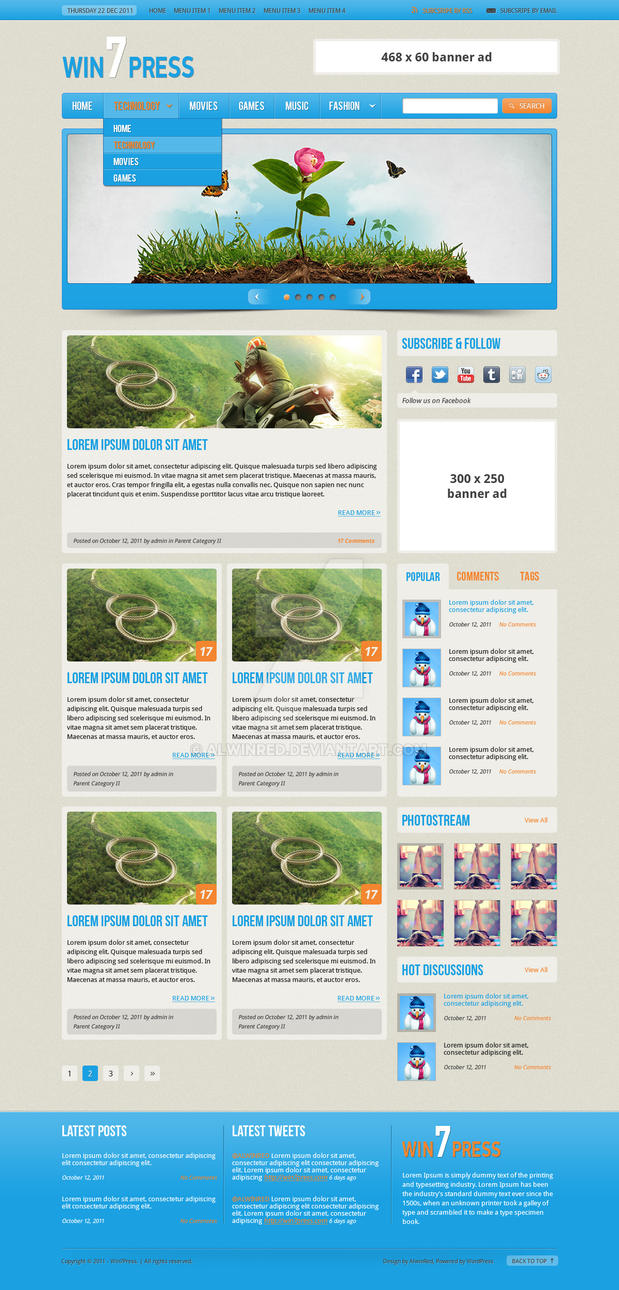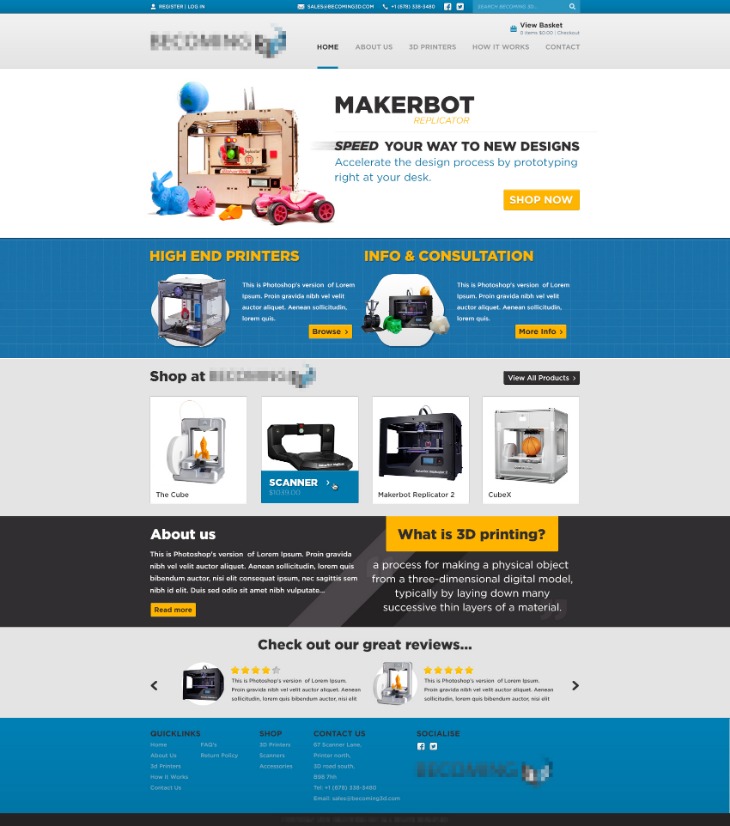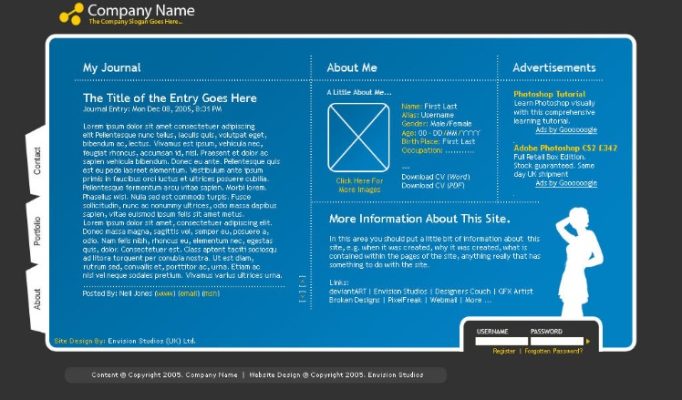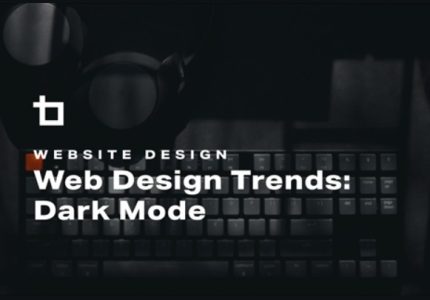Understanding Shopify Website Design
Understanding Shopify website design is essential for creating an engaging and effective online store. A well-designed Shopify website not only attracts visitors but also provides a seamless shopping experience, encouraging customers to browse, select, and purchase products with ease. By mastering the elements of layout, customization, and user experience, businesses can build a strong online presence that drives sales and fosters customer loyalty.
Importance of Responsive Design
Understanding Shopify website design is essential for creating an engaging and effective online store that attracts and retains customers. A well-designed Shopify site combines attractive visuals with user-friendly navigation, ensuring visitors find what they need easily and enjoy their shopping experience. Good design also helps build brand credibility and encourages repeat business.
Responsive design plays a crucial role in Shopify website development by ensuring the site functions seamlessly across all devices, including desktops, tablets, and smartphones. With more shoppers using mobile devices, a responsive Shopify store provides a consistent and accessible experience, reducing bounce rates and increasing conversion rates. Implementing responsive design not only enhances user satisfaction but also improves search engine rankings, making it an indispensable aspect of modern Shopify website design.
User Experience (UX) Fundamentals

Understanding Shopify website design and user experience (UX) fundamentals is essential for creating an effective online store that attracts and retains customers. A well-designed Shopify site combines visual appeal with intuitive navigation, making it easy for visitors to find products and complete purchases. Key UX principles include clarity, simplicity, and consistency, which help reduce friction and enhance overall usability. Responsive design is also crucial, ensuring the website functions seamlessly across various devices and screen sizes. Additionally, incorporating clear calls to action, fast loading times, and accessible content contribute to a positive shopping experience. By prioritizing user needs and following best practices in Shopify website design, merchants can increase engagement, conversions, and customer satisfaction.
Visual Aesthetics and Branding
Understanding Shopify website design involves exploring how visual aesthetics and branding elements work together to create an engaging and effective online store. A well-designed Shopify site not only attracts visitors but also guides them seamlessly toward making a purchase. Critical aspects include layout, color schemes, typography, and imagery, all of which should reflect the brand’s personality and appeal to the target audience.
Visual aesthetics play a vital role in capturing attention and establishing credibility. Clean, consistent, and appealing designs enhance user experience by making navigation intuitive and content easily digestible. Incorporating high-quality images and thoughtful use of whitespace can elevate the overall look, making the site more inviting and professional.
Branding in Shopify website design ensures that the website communicates a unique identity that resonates with visitors. This encompasses the use of logos, brand colors, fonts, and messaging styles that reinforce brand recognition. A cohesive branding strategy helps build trust, foster customer loyalty, and differentiate the online store from competitors.
Ultimately, successful Shopify website design balances aesthetics with functionality, ensuring that the website is not only visually compelling but also optimized for conversions. By aligning visual elements and branding with the overall business objectives, store owners can create a compelling digital storefront that drives sales and enhances brand loyalty.
Key Components of Shopify Website Design
Understanding the key components of Shopify website design is essential for creating an engaging and effective online store. These elements work together to provide a seamless user experience, showcase products attractively, and optimize conversions. By focusing on layout, visual branding, navigation, and functionality, businesses can build a compelling website that attracts and retains customers.
Theme Selection and Customization
Shopify website design encompasses various key components that work together to create an effective online store. These include a clean and user-friendly layout, responsive design that adapts to different devices, and an intuitive navigation system to guide visitors seamlessly through products and categories. Visual elements such as high-quality images, engaging banners, and cohesive branding are essential for attracting and retaining customers. Additionally, integrating clear calls-to-action and a straightforward checkout process enhances the shopping experience.
Theme selection plays a crucial role in the overall look and feel of a Shopify store. It involves choosing a pre-designed template that aligns with the store’s brand identity and functional needs. Shopify offers a diverse range of free and paid themes optimized for performance and responsiveness. When selecting a theme, factors to consider include layout options, customization flexibility, built-in features, and compatibility with desired apps and plugins.
Customizing a Shopify theme allows store owners to tailor their website to their specific branding and business requirements. This can involve modifying colors, fonts, layouts, and content sections to create a unique online presence. Shopify provides user-friendly tools such as the theme editor for visual customization, while more advanced changes can be implemented through editing the code using Shopify’s Liquid templating language. Proper customization ensures that the website not only looks professional but also provides a seamless and engaging shopping experience for customers.
Navigation and Menu Structure
Effective Shopify website design relies heavily on a well-structured navigation and menu system, which helps visitors find products and information easily. Clear and intuitive navigation enhances user experience, encouraging longer visits and higher conversion rates. Key components include organized menus, logical hierarchies, and accessible categories that guide customers seamlessly through the online store.
- Home Page Layout: A visually appealing and organized homepage that highlights key products, promotions, and navigational elements.
- Main Navigation Menu: A prominent menu typically positioned at the top, featuring primary categories for quick access.
- Dropdown Menus: Subcategories that appear when hovering over main menu items, providing detailed navigation options without cluttering the interface.
- Footer Navigation: Additional links often placed at the bottom of the page, including customer service, policies, and social media links.
- Mobile-Friendly Navigation: Responsive menus that adapt for smaller screens, such as collapsible hamburger menus.
- Search Functionality: An accessible search bar allowing users to quickly find products or content.
- Category Pages: Dedicated pages that display products within specific categories, arranged logically for ease of browsing.
- Breadcrumb Trails: Navigation aids showing users their current location within the site hierarchy and allowing easy backtracking.
- Call-to-Action Buttons: Strategically placed buttons that direct users toward conversions like purchases or sign-ups.
Product Page Layout
Key components of Shopify website design include a clean and user-friendly layout, compelling visuals, easy navigation, clear calls to action, and responsive design that adapts to various devices. These elements work together to enhance the shopping experience and encourage visitors to make purchases.

The product page layout is crucial in converting visitors into buyers. It should prominently display high-quality product images, provide detailed descriptions, include pricing information, and feature options like size or color. Additionally, incorporating customer reviews, trust badges, and an evident add-to-cart button helps streamline the purchasing process and build credibility.
Checkout Process Optimization
Effective Shopify website design involves several key components that work together to create an engaging and user-friendly shopping experience. A visually appealing layout with a clear hierarchy ensures that visitors can easily navigate the site and find products. Utilizing consistent branding elements, such as colors, fonts, and logos, helps establish brand identity and trust. High-quality product images and detailed descriptions are essential for showcasing items and encouraging purchases. Incorporating intuitive navigation menus and search functionality allows customers to quickly locate products and categories. Additionally, mobile responsiveness is crucial to provide a seamless experience across all devices.
Checkout process optimization is a critical aspect of Shopify website design that directly impacts conversion rates. Simplifying the checkout steps reduces the chances of abandonment by making the process quick and straightforward. Offering multiple payment options, including credit cards, digital wallets, and alternative methods, caters to different customer preferences. Clear and transparent shipping and return policies build customer confidence. Including trust signals, such as security badges and SSL certificates, reassures customers about the safety of their transactions. Additionally, enabling guest checkout and minimizing form fields can streamline the process, making it easier for customers to complete their purchases promptly.
Design Best Practices for Shopify Sites
Creating an effective Shopify website requires a strategic approach to design that enhances user experience and drives sales. By following best practices, store owners can ensure their site is visually appealing, easy to navigate, and optimized for conversions. Implementing thoughtful design principles helps build trust with customers and sets the foundation for long-term success in the competitive e-commerce landscape.
Consistent Color Schemes and Typography
Effective Shopify website design hinges on implementing best practices that enhance user experience and brand consistency. A key aspect of this is maintaining a consistent color scheme throughout the site, which helps reinforce brand identity and creates a visually cohesive experience for visitors. Selecting a primary color palette and adhering to it across all pages, buttons, banners, and other elements ensures clarity and professionalism. Equally important is the use of consistent typography to improve readability and establish a clear visual hierarchy. Choosing a limited set of fonts and styles for headings, subheadings, and body text ensures the site appears unified and engaging. Combining thoughtful color schemes with harmonized typography not only elevates the aesthetic appeal of a Shopify site but also improves user navigation, trust, and overall conversion rates.
High-Quality Product Images
Creating an effective Shopify website requires attention to both aesthetic appeal and functionality. Incorporating high-quality product images is essential for capturing visitors’ attention and encouraging purchases. Clear, professional images showcase products accurately, helping customers make informed purchasing decisions. Consistent image styles and backgrounds maintain a cohesive look throughout the site, enhancing user experience. Additionally, utilizing multiple images from various angles provides a comprehensive view of each product. Optimizing image sizes ensures fast load times without sacrificing quality, which is vital for retaining visitors. Incorporating zoom features allows customers to examine details closely, increasing confidence in their purchase. Overall, pairing thoughtful design with high-quality visuals creates a compelling online storefront that drives conversions and builds brand trust.
Clear Calls to Action (CTAs)
Effective Shopify website design revolves around creating a seamless user experience that guides visitors toward desired actions. Clear calls to action (CTAs) are essential in guiding users to make purchases, sign up for newsletters, or engage with your content. Well-designed CTAs should be visually prominent, concise, and action-oriented, clearly communicating the next step for the visitor. Placement of CTAs in strategic locations, such as above the fold or at natural decision points, increases their effectiveness. Using contrasting colors and compelling language helps draw attention and encourages users to act. Additionally, ensuring that CTAs are consistent throughout the site enhances navigability and reinforces your key objectives, ultimately leading to higher conversion rates and improved user satisfaction.
Tools and Resources for Shopify Design
Creating an attractive and functional Shopify website requires the right tools and resources to streamline the design process. From customizable themes and design apps to expert tutorials and community support, these resources empower store owners and designers to build visually appealing and user-friendly online shops. Leveraging the right tools can significantly enhance the overall user experience and boost sales.
Useful Shopify Themes and Templates
Effective Shopify website design relies on a variety of tools and resources that streamline the creative process and enhance the functionality of your online store. Utilizing these tools can help you craft a visually appealing, user-friendly, and conversion-optimized website. From design software to theme marketplaces, there are numerous options to explore.
Some popular design tools include Adobe Photoshop and Illustrator for creating custom graphics, while Canva offers a user-friendly platform for quick visual content creation. For coding and customization, code editors like Visual Studio Code or Sublime Text are invaluable. Additionally, tools such as Shopify’s Theme Kit facilitate theme development and management, making it easier to deploy updates.
When it comes to Shopify themes and templates, choosing the right one is crucial for establishing your brand’s aesthetic and ensuring a seamless shopping experience. Shopify’s Theme Store offers a wide selection of professionally designed themes, many of which are customizable and mobile-responsive. Popular themes like “Debut,” “Brooklyn,” and “Minimal” provide versatile foundations for various types of online stores.
Besides official themes, third-party marketplaces such as ThemeForest and TemplateMonster feature numerous Shopify templates tailored to specific niches and design preferences. These templates often include pre-built layouts, page sections, and customization options, reducing development time and providing professional-quality design.
Enhancing your Shopify site with useful apps from the Shopify App Store can extend functionality, improve aesthetics, and optimize performance. Tools for SEO, page builders, and social media integrations can significantly impact your store’s success.
Popular App Integrations
Creating an engaging and functional Shopify website relies heavily on utilizing a variety of tools and resources designed to enhance the design process and streamline management. These tools assist in customizing themes, optimizing user experience, and maintaining a professional appearance, ensuring your online store stands out in a competitive market.
Popular app integrations for Shopify include Oberlo for dropshipping, Klaviyo for email marketing, Privy for pop-ups and lead generation, and Loox for customer reviews. Additionally, apps like PageFly and Shogun enable drag-and-drop page building, offering flexibility without coding skills. Integrating these tools can significantly improve store functionality, conversions, and customer satisfaction, making your Shopify website more effective and appealing.
Custom Coding and Liquid Templating
When working on Shopify website design, having the right tools and resources for custom coding and Liquid templating is essential to create a unique and functional online store. Shopify provides a comprehensive suite of tools, including the Shopify Theme Editor, which allows designers to customize themes through an intuitive interface. Additionally, Liquid, Shopify’s templating language, enables dynamic content rendering and flexible design adjustments.
For coding and development, Shopify Theme Kit is a powerful command-line tool that facilitates theme development, testing, and deployment across multiple environments. Developers often use code editors like Visual Studio Code or Sublime Text, which support syntax highlighting and snippets for Liquid, HTML, CSS, and JavaScript. To streamline the development process, there are numerous plugins and extensions compatible with these editors.
Resources such as the Shopify Partner Program and Shopify Community forums offer valuable support, tutorials, and best practices for customizing themes and working with Liquid. Shopify’s official documentation provides comprehensive guides on theme development, Liquid syntax, and API integrations. Additionally, online platforms like GitHub host repositories of open-source themes and custom Liquid snippets, enabling developers to learn from and contribute to community-created solutions.
Overall, a combination of development tools, code editors, official documentation, and community resources equips Shopify designers and developers to create tailored, visually appealing, and highly functional eCommerce websites.
Optimizing Shopify Website Performance
Optimizing Shopify website performance is essential for creating a seamless shopping experience and boosting sales. A fast, responsive site not only improves customer satisfaction but also enhances search engine rankings. In the realm of Shopify website design, focusing on performance optimization helps store owners attract and retain customers, ultimately driving success in a competitive online marketplace.
Page Load Speed Tips
Optimizing your Shopify website performance is crucial for providing a seamless shopping experience and increasing conversions. One of the key factors is enhancing page load speed, which directly impacts user satisfaction and search engine rankings. To achieve this, minimize the use of heavy images by compressing and resizing them appropriately without sacrificing quality. Leveraging browser caching allows returning visitors to load pages faster by storing some data locally. Additionally, streamline your theme by removing unnecessary scripts and apps that can slow down your site. Choosing a lightweight, optimized theme is also beneficial. Enabling lazy loading for images ensures that only images in the viewport load initially, reducing load time. Regularly monitoring your website’s speed using tools like Google PageSpeed Insights or GTmetrix helps identify specific issues and track improvements. By focusing on these tips, you can significantly enhance your Shopify site’s performance and deliver a better shopping experience to your customers.
Mobile Optimization Techniques
Optimizing Shopify website performance and ensuring mobile optimization are essential for creating a seamless shopping experience and increasing conversions. Fast-loading pages reduce bounce rates and improve user satisfaction, especially on mobile devices where connectivity may vary. Implementing techniques such as compressing images, minifying code, and leveraging caching strategies can dramatically improve site speed. Additionally, adopting a responsive design ensures your Shopify store adapts smoothly to various screen sizes and devices. Prioritizing mobile-first design principles, such as simplifying layouts, using larger buttons, and avoiding intrusive pop-ups, enhances usability and engagement on smartphones and tablets. Regularly testing your website on different devices and browsers helps identify performance issues and ensures a consistent, high-quality shopping experience for all customers.
SEO Best Practices
Optimizing Shopify website performance and implementing SEO best practices are essential for creating a successful and user-friendly online store. A well-designed Shopify site not only attracts visitors but also encourages them to browse and purchase products by providing fast load times, smooth navigation, and optimized content.
To enhance Shopify website design with SEO in mind, consider the following strategies:
- Improve page loading speeds by compressing images and minimizing code to reduce bounce rates.
- Use responsive design to ensure the site performs well on all devices, increasing accessibility and engagement.
- Optimize product titles, descriptions, and meta tags with relevant keywords to improve search engine rankings.
- Implement URL structures that are clean and descriptive for easier indexing by search engines.
- Create high-quality, original content such as blog posts and guides to drive organic traffic and establish authority.
- Utilize schema markup to enhance search result listings with rich snippets, boosting visibility.
- Maintain a logical hierarchy with clear navigation menus and internal linking to distribute link equity and improve crawlability.
- Regularly monitor website analytics and SEO performance to identify areas for improvement and adapt strategies accordingly.
By combining these design and SEO best practices, Shopify store owners can significantly increase their site’s visibility, attract more customers, and ultimately drive higher sales.





